Avalon Camping Ground
In August 2012 we’d like to share history pages on Pittwater’s own Fields of Dreams. A rural area soon after European settlement where food crops and dairies were tended, the landscape itself shows evidence, in the ‘keeping’ practices inherent in our indigenous people’s cultures, of being an Eden with green open spaces prior to then. As time progressed Golf ranges, camping grounds and sports fields ensured open green spaces remained a part of our community and culture. Their own ebb and flow, in some of these, reflects the economic conditions, the aspirations of generations and the passion for sport that is part of our nature.
Those who came first though, in stepping off those ships, lived first in tents and under the brilliant southern stars. Before A J Small opened the ‘Avalon Beach Private Pioneer and Camping Grounds’ or the Avalon Picnic Grounds operated on what is now the green area where the ‘yellow brick road’ or path wends behind Avalon Dunes, others who came to the area lived under canvas and off the fat of the land.
Alexander Stewart Jolly in the book he wrote for his children, ‘The Spirit of the Bush’ speaks of eating oysters from Careel Bay and an abundance of other seafoods. This gentleman was renowned for camping on the blocks of land where he would build some of our more famous and quirky houses.
Throughout the 1920's and into the 1930's a popular holiday or weekend away was the 'motoring camping holiday', where people, as can be seen below, would install makeshift shades and canvases over their vehicles.
LE "MOTOR CAMPING OUT.'
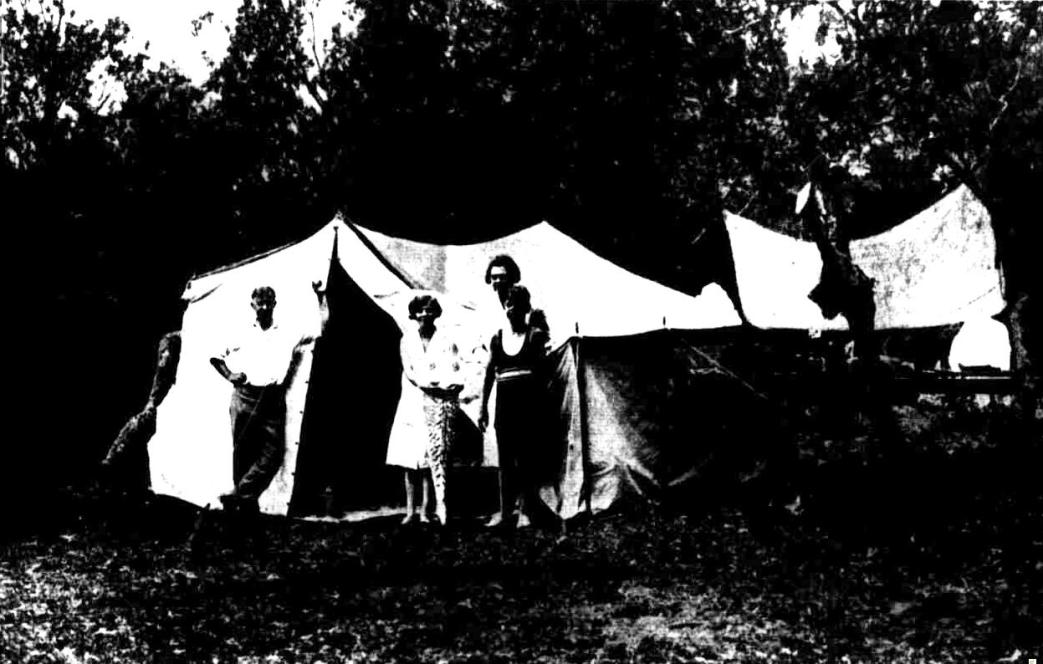
Monte Luke, le célèbre artiste photographe de Sydney, Madame Monte Luke et leur famille à Avalon Beach, près Sydney. LE "MOTOR CAMPING OUT." (1928, October 26). Le Courrier Australien (Sydney, NSW : 1892 - 2011), , p. 3. Retrieved from http://nla.gov.au/nla.news-article161724364

(1930). [Motor cars, some with tarpaulins attached, parked adjacent to Avalon Beach, New South Wales, 1930, 2] Retrieved from http://nla.gov.au/nla.obj-147290238 - shows the road running north in the background and dressing sheds on the beach.Part of Prospectus photographs of Avalon, 1930 [album], courtesy National Library of Australia.
Alexander Stewart Jolly came to Avalon early in the Depression era, exhausted by working in the city and one of those who was poor. The Depression in Australia, stated by some to have reached its peak in 1932, caused many to construct crude dwellings or pitch permanent tents along the whole of the Australian eastern coastline where they could live without paying unaffordable rents and feed families with what they could catch from the sea or glean from the shorelines. Many of the 33 yard pools built on the Northern Beaches coast during this period were constructed by unemployed folk. There were also road building programs and many of what were termed 'Unemployed Camps'. Some of these folk sought to make a few pennies to buy bread or flour to make bread from selling fish caught, not always without heaping tragedy upon tragedy;
SWEPT OFF ROCKS. Fisherman Drowned.
James Wise, an unemployed carrier, was swept from the rocks at Avalon on Saturday and despite the attempts of a friend to save him was drowned wise, with his wife and three children, was camping at Pittwater, and was earning his living by fishing. With another man, James Williams, he was fishing on Saturday off the rocks at Avalon at a spot called "The Hole in the Wall " The sea was rising, and waves were breaking over the men, and Williams suggested that they should move to a higher place. Before Wise could move, a wave swept him away Williams swam out, and struggled to bring Wise ashore for almost 20 minutes A wave separated them, and Williams was too exhausted to succeed in another attempt at rescue. Narrabeen police were informed of the tragedy, but the body had not been recovered up to last night. SWEPT OFF ROCKS. (1932, November 28). The Sydney Morning Herald (NSW : 1842 - 1954), p. 9. Retrieved from http://nla.gov.au/nla.news-article16933805
For others a vestige of dignity is restored in ‘having a holiday’ rather then being among those who have no other option in the rising popularity of the ‘Motor Camp’, cars being a then popular refuge for the homeless:
Narrabeen, Avalon, and other havens on the coast presented a remarkable sight. The popularity of the motor camp has increased enormously in recent years, and hundreds of cars were parked at these places. The motorist has received every assistance and encouragement from municipal authorities to spend a holiday in this manner, and the response has exceeded all expectations. Thus, many thousands of people can feel accounted for they are spending their holiday under canvas beside their cars. The CITY RELAXES. (1934, December 27). The Sydney Morning Herald, p. 8 Supplement: Women's Supplement. Retrieved from http://nla.gov.au/nla.news-article17135091
This was still basic living, with weather and bushfires to contend with; At many places hoses were used to fight the fire. Water was connected to Avalon only a fortnight ago. (The Sydney Morning Herald, Friday 13 November 1936, page 10). By now many semi-permanent residents lived in this flat area behind the dunes, a paddock subject to flooding. Their children attended Newport School, often without the luxury of shoes.
Post WWII Australia had a lot of army surplus equipment and a shortage of building supplies. When speaking to Norma Watt (whose father built Careel Bay Boatshed), Doreen Cherry and Doug Crane, both of whom had to hand build their own homes in Avalon, the prevalence of living in converted garages or tents and hunting around hard and long for building supplies, whether bricks or boards, some resorting to making their own, was a feature in both their reminiscences. Returning service personnel were eager to ‘get on with it’ and begin the kind of life World War Two had put on hold; they wanted to get married and start families, to have their own homes and went about doing so with the same gusto and nerve they’d applied to life during the war.
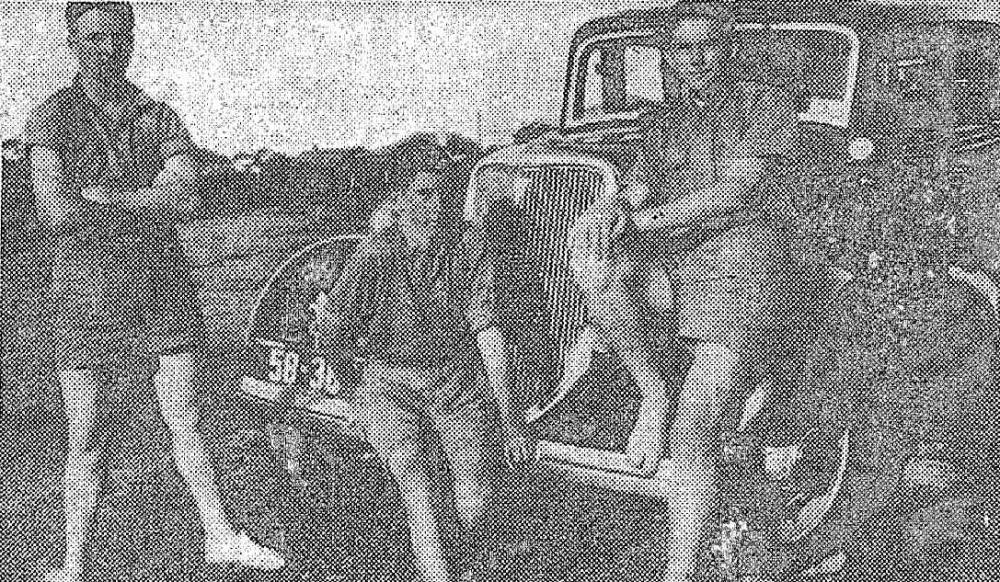

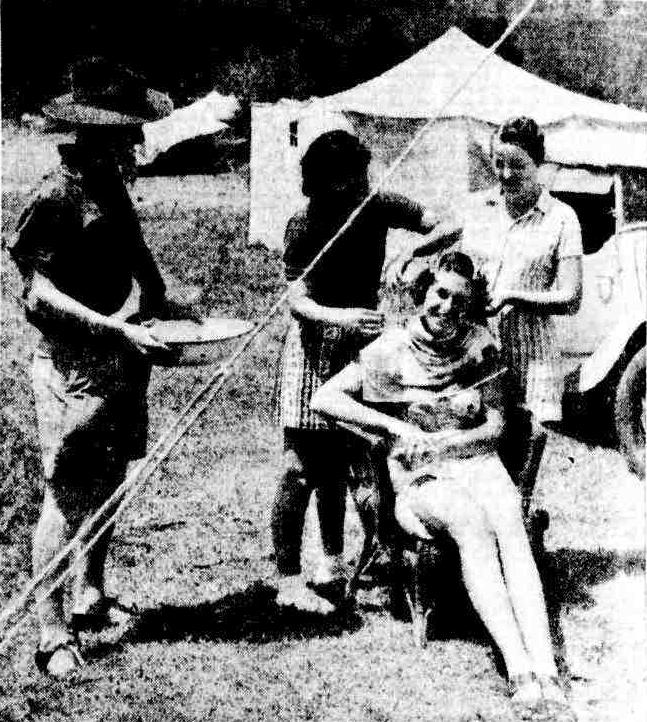
"If you want a thing done, do it yourself," was a pioneer's precept.
Once more it is being put to practice by some
house-less Sydney families. Tired of waiting for the contractor who never comes,
they're. . Building their own homes By FRANK SNOW: Within a 20-mile radius of
Sydney's G.P.O., scores of families are living a home-life that puts the clock
back 100 years. Like the early colonists, they are roughing it in all sorts of
temporary structures while they build their own homes. Outdoor fireplaces,
creek-bank burdening water carrying, kerosene lamps and candles, and general
bunk raw conditions are being endured by some of the women belonging to a new
age of pioneers. Most of the amateur home-builders are at outlying
districts-Liverpool, Moorebank, Asquith, Mt Colah, Kuring-gai, Berowra, Newport,
and along the coast to Avalon. In some cases whole neighbour-hoods appear to
have been gripped by the build your own home" craze.
Most municipal councils
and urban shires are anxious to help the owner of a building site who wants to
build, and subject to certain conditions permits, are issued to erect
"temporary" premises as an abode. Some people, because of difficulties
in getting building materials, have already been a year or more in their
temporary habitations. Councils extend the permits in such unavoidable
circumstances."IF you want a thing done, do it yourself," was a pioneer's
precept. Once more it is being put to practice by some house-less Sydney
families. Tired of waiting for the contractor who never comes, they're.,
Building their own homes. (1947, May 13). The Sydney
Morning Herald, p. 11. Retrieved from http://nla.gov.au/nla.news-article18025875
Earlier in 1947, in part in recognition of the bruised psyche of all who had survived this conflict, and with a firm basis in real truth in other cases, the popularity of ‘holiday camping’ was touted again and lends an insight into Avalon’s Camping grounds and tents fitted out like houses, complete, in some cases, with small plots of flowers:
Canvas Holiday . . . By SUSAN ROSS
HOLIDAY camping is reaching a new peak of popularity this summer. Reasons are the scarcity of accommodation at resorts, a more generous petrol allowance for motorists, and the disposal of military equipment which is ideal for campers. January, when schools are closed, is the month for family holidays. For the last week or more thousands of families, have moved into canvas and. caravan settlements at favourite spots throughout the State. Lately—to take just one popular area – there have been 900 tents at Lake Park, Narrabeen Lakes, 500 at Philip Park, Palm Beach, and 150 at Avalon Beach.
Few rigours remain attached to holiday camp life. Primus and oil stoves and a multitude of portable domestic gadgets, mostly from military disposal stores, have seen to that. WHEN I visited the camping ground at Avalon Beach recently, 150 tents and caravans housed a sun-tanned community, lacking few - of the comforts of home -Washing fluttered on tent - ropes, radios gave the news and there was a healthy sound of primuses and kerosene stoves working to prepare their mid-day meal.
I called at a smart green and white tent which Mrs. Elsie O'Day, of Arncliffe, her husband, and three small children, are sharing with Mr. and Mrs. H. Bowden, of Ashfield, for six weeks of the school holidays. They conducted me through the tent which was divided by curtains into three rooms. The bedrooms contained folding beds and collapsible wardrobes and cabinet. Hand mirrors were fastened to tent poles. In the living room they have a long folding table, seven folding chairs, an ex-army ice food box, and a folding food cabinet. "We have made full use of army equipment," Mrs. O'Day said. "The ice box was one that was used in the front line for keeping food hot for the troops, but makes a perfect ice chest."
A caravan painted cream and orange and stationed near the O'Day's tent caught my eye. I called over and found Mr. and Mrs. J. Southwick of Glenbrook at home. Canvas blinds, attractively striped in orange, brown, yellow, green and beige, keep the caravan cool inside and the curtains Mrs. Southwick made and gauze coverings keep out stray flies and insects. inside green and beige linoleum covers the floor, matching the green Chairs and table. At night the table is lifted out allowing the cushioned bunk behind it to collapse into a double bed. Another double bunk forms the opposite end of their 14ft 6in x 6ft 4in house. Canvas Holiday. (1947, January 7). The Sydney Morning Herald .p. 12 Supplement: The Sydney Morning Herald Magazine.. Retrieved August 4, 2012, from http://nla.gov.au/nla.news-article27903905
Published in the child's section of this newspaper, a visitor's perspective during Summer in the Boxing Day edition:
AVALON: Avalon Beach has a camping area, with golden sandhills forming a background. It's a lovely place to picnic. There are grassy slopes to eat your lunch on, and there are slippery-dips, swings, monkey-bars and many other delightful things. The surf is beautiful, but if you prefer still water, you can swim in the rock baths. Nearly every weekend I go down to m our caravan and spend enjoyable days basking in the sunshine. If you like walking you can visit St. Michael's Cave. It has a small entranc e but a large interior. — Bruce Arbon, 497 Great North Road, Abbotsford. RAMBLER'S NOTEBOOK (1948, December 26). The Sun (Sydney, NSW : 1910 - 1954), , p. 3 (SUPPLEMENT TO THE SUNDAY SUN AND GUARDIAN). Retrieved from http://nla.gov.au/nla.news-article228693060
Some long term residents recall flooding through the Avalon Camping Grounds as a regular occurrence and seeing tents and possessions being swept from the area "all the way to Careel Bay":
THEY SUFFERED DISCOMFORT FROM THE RAIN: Mr. Syd Forrester, of Leichhardt, digging a trench during heavy rain in an effort to prevent the flooding of his tent at the Avalon camping ground yesterday.
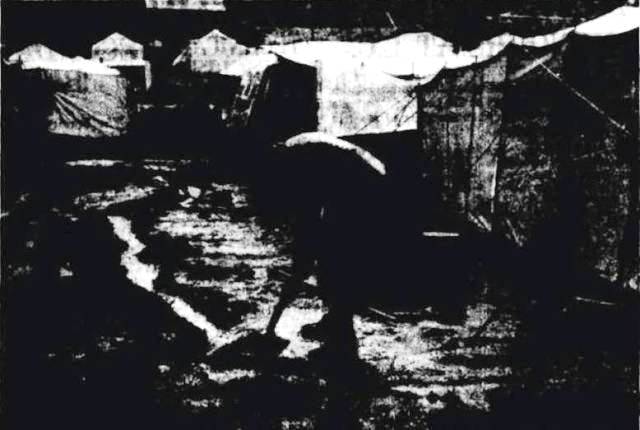
The occupants of six of the 90 tents on the reserve left for home. THEY SUFFERED DISCOMFORT FROM THE RAIN. (1948, January 15). The Sydney Morning Herald, p. 3. Retrieved from http://nla.gov.au/nla.news-article18057497
Warringah Shire Campaign - Shack And Tent Dwellers Lose Their Permits - Check For Rackets
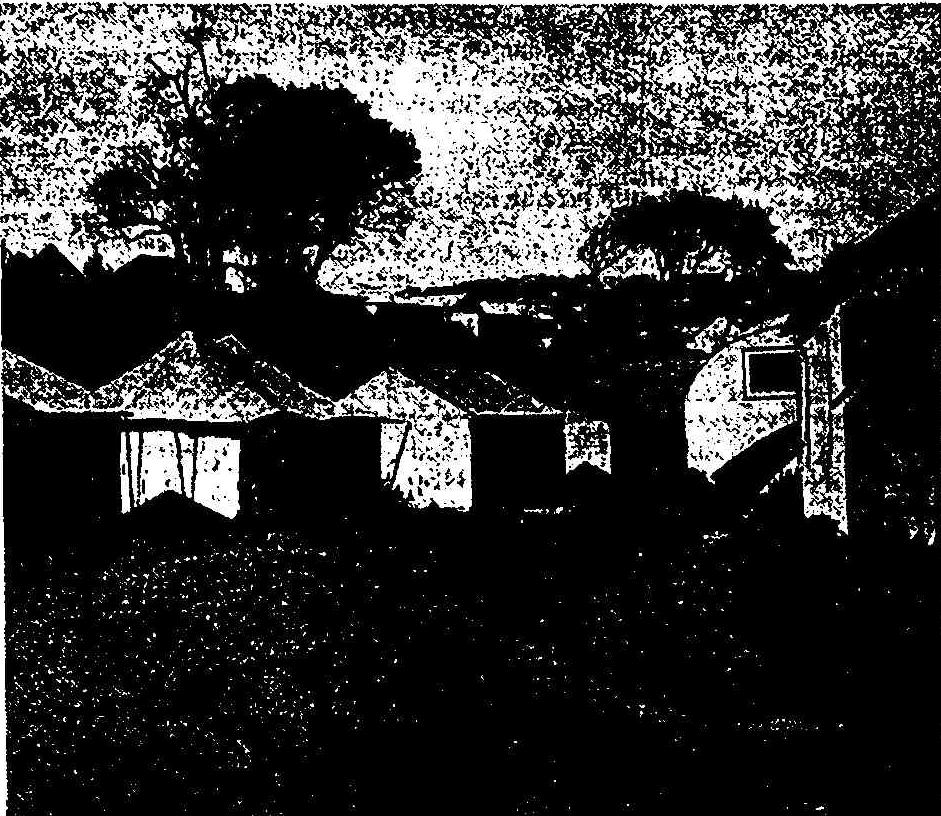
Temporary camps and huts at Palm Beach.
More than 1,000 families living in garages, tents, sheds and shacks between Manly Vale and Palm Beach are affected by a recent decision of Warringah Shire Council to clean up sub-standard homes. Last week the council started to send out hundreds of notices, informing occu-pants of "temporary dwellings" that permission to occupy the dwellings had been revoked by the council.
The council informed the people that they would have to comply with certain provisions to get a new order to remain in occupancy.
The president of the shire, Cr. J. L. Fisher, said the council had taken this action to:
* Clean up a large number of sub-standard homes;
* Stop racketeers from fleecing homeless people;
* Improve health standards in the shire.
"We are not refusing a home to the genuine homeless, but we are making it impossible for the racketeer and the speculator to deal in temporary dwellings," he said.
Cr. Fisher said the racketeers had exploited homeless people by erecting a garage or temporary dwelling on a block of land, putting a few sticks of furniture in it, and selling it as a "home" for big money. There were about 1,100 temporary dwellings in the shire.
Three Conditions
The council in the past had waived building regulations to allow homeless people to occupy temporary dwellings while they built a house. Cr. Fisher said. In hundreds of instances the owners of such places had made no attempt to erect a house.
Now permits to occupy a temporary dwelling would be issued only provided:
THE BUILDING is to be part of a permanent structure approved by council;
THE APPLICANT makes a statutory declaration that the building would be used as a residential building;.
A CAVEAT is entered on the deeds of the property showing it to be a temporary dwelling-not transferable by law.
Cr. Fisher said people in temporary dwellings who intended to build permanent homes on their land would be given reasonable time to do so.
PALM BEACH TENTS
Unless council officers were satisfied that these people were making attempts to erect permanent homes, action would be taken. He said the council at a later meeting would determine its attitude to people who were living permanently in canvas homes on council camping areas at Palm Beach, Lake Park, and other places.
These people paid a camp fee of 15/ a week to the council. Comments from occupants of temporary dwellings in the area last week included these:
Mr. Peter Minigle, Palm Beach camping area: "I am a pensioned stonemason, and could not afford to live any-where else. My wife and I are comfortable here, and much healthier than when we were living at Paddington."
Mrs. M. Potronljevic, PAYING IT OFF Mrs. M. Petronljevfc, Careel Head Road, North Avalon: "We don't like it, but we have to live in a garage until we can build a home. My husband and I had nowhere else to live when we married, and paid £ 1,000 for the land and dwelling. We are still paying it off before we can build."
A woman at North Avalon said she was paying £2 a week rent for a 24ft by 12ft dwelling erected by a man who had since built a home on another block for himself. A man at Mona Vale said he had built the first two rooms of his home, but was held up for finance to complete the dwelling.
Another Housing Problem - Injustice Seen To Landlords
The president of the N.S.W. Real Estate Institute, Mr. Harry Amadio, said proposed amendments to the Landlord and Tenant Act ignored the most important question for the home owner--when could he gain possession of his own home. Nor did they provide any relief to property owners whose charges were pegged at 1939 levels.
Major provisions of amendments, approved by the State Cabinet but yet to be passed by Parliament, are that Federal Land Tax may be taken into consideration in rents for some large properties, and that premises let for a continuous period of more than eight weeks to be disqualified as "holiday premises."
The amendments fail by far to remedy injustices and anomalies of the Act," Mr. Amadio said. The amendments do nothing to encourage an increase in urgently required accommodation, either by way of new buildings for letting purposes. or subdivision of large houses to provide home units.
"Owners will not construct new buildings nor will home owners subdivide their homes, knowing that they will be compelled to take rentals based on 1939 values and, to make matters worse, will have no control over their tenants."
Mr. Amadio said that if a person subdivided his home and accepted a tenant he could not be sure of getting the tenant out again, even if he turned out to be a black-marketeer, S.P. bookmaker, or habitual drunkard.
COSTLY COURTS
The owner would have to go through the long procedure of the Courts and he would be lucky if it cost him less than £50. Even then he would be quite unassured of success.
Mr. Amadio said rents were pegged on 1939 levels, but it was safe to assume that most owners of properties were receiving a smaller net return today than in 1939. Warringah Shire Campaign Shack And Tent Dwellers Lose Their Permits (1952, May 25). The Sunday Herald (Sydney, NSW : 1949 - 1953), , p. 5. Retrieved from http://nla.gov.au/nla.news-article28671967
On July 28th, 1952 four feet of water rushed through these tents again. Those forced to live permanently in the Avalon Camping Ground were avoided by some garage or cottage dwelling residents, their children warned to stay away as they were ‘gypsies’. Another flooding quickly restored the prevalent community spirit that was and is the village of Avalon’s prevailing tendency:
Freak Storm Hits Avalon: Drives Out Tent Dwellers
A freak hailstorm yesterday flooded many parts of Avalon, doing hundreds of pounds' worth of damage. Scores of people living in the camping area at Avalon were forced to leave their bornes. Tents were torn to-shreds and the roofs of caravans severely damaged. Several tents and the furniture inside them were washed out to sea by floodwaters. Most of the families living in the camping area were given shelter for the night in the Avalon surf shed.
Mrs. Joyce Andries, of the Avalon Fire Station, said last night that immediately residents realised the floodwaters were rising, volunteers raced to the camping area to help to evacuate the children. The children were carried to safety through the racing water. Most of them were taken to the Avalon surf sheds, and the remainder were taken to the homes of relatives and friends.
Among the worst sufferers in the camping area were Mr. and Mrs. V. Harrington, who estimated their losses at about £.250. Their tent was not washed away, but damage to the roofing, sides and floor coverings was "enormous," said Mr. Harrington. The roof of Harrington’s tent was torn to shreds by the hailstones while water roared over the floor, destroying floor coverings and food supplies. Mr. Harrington had to use a suction pump to clear the water from the tent. He said he had only just cleaned up and repaired the damage done by last Saturday morning's floods. The storm began shortly after 2 p.m. and lasted for nearly three and a half hours.
Hailstones, measuring almost two and a half inches across, rained on the shopping and camping centres. Stormwater, in places three feet deep, raced through the shopping centre, flooding shops and homes. Hundreds of pounds' worth of stock in the shops was destroyed. Road traffic from Palm Beach and Sydney was dislocated. Vehicles were unable to pass Avalon.
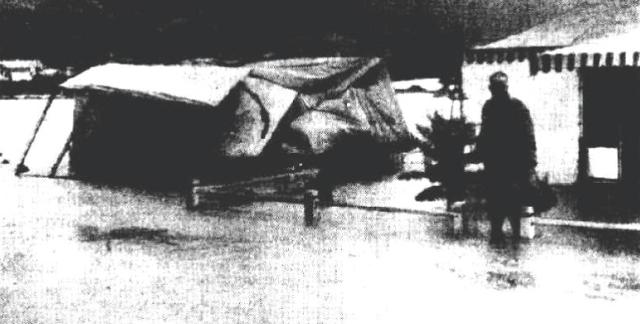
The tent on the left, owned by Mr D. Needham, was completely capsized by the rushing waters.
One of the shops which suffered most damage was Le Clercq's general
merchandise store in Avalon Parade. Mr. Le Clercq, the owner, bored holes in the
floorboards in an attempt to drain away the two feet of water which was damaging
his goods.
He said he had only just cleaned up the debris from a flood which occurred on Friday. He had suffered more than £250 worth of damage in that flood. The rush of water through Avalon Parade was so great at one stage that several cars were almost submerged. The swirling flood carried one car almost 200 yards before dumping it on the pavement. Freak Storm Hits Avalon: Drives Out Tent Dwellers. (1953, May 7). The Sydney Morning Herald, p. 1. Retrieved from http://nla.gov.au/nla.news-article18372783
See: Narrabeen Lagoon And Collaroy Beachfront: Storms And Flood Tides Of The Past
The camping grounds were finally closed due to complaints from residents - Warringah Shire Council Minutes of Meetings record:
16/2/1953:
Avalon Beach and District Progress Association, 23/1/1953, Re: Avalon Camping Area - Referring to previous correspondence dating back many years wherein the Association has requested the removal of the Avalon Camping Area stating that the following robberies breaking and entering occurred around the fringe of such area during the recent: Christmas-New Year holidays: Le Clerc’s Store - £30 reported stolen. Walroys' Beach Kiosk - £5 goods stolen. Grantleys, Bellevue Avenue - £17 goods stolen., Franklands Barrenjoey Road - Telephone money stolen. The Chalet, George Street - Thieves disturbed. Gonsalves Kiosk - £25 stolen. McDonald's Store -Thieves disturbed, Adding that the ratepayers of Avalon are incensed that this blot on the community should be allowed to exist, despite the Association's repeated representations to have this public reserve closed to campers. Further stating that drinking parties on the area are frequent, sanitary-arrangements are a menace to public health, and unless the camp is closed or removed this year-‘’they’’ will be-unable to support the present Councillors in the future.
Moved by Cr. Beach, seconded: Cr. Quinlan-that-this letter be received and no action ordered thereon.
An amendment was moved by Cr..Mckay seconded by Cr. Berry; that the Avalon Camping Area be abolished from the cessation of "this season’’, or the 30 June, next, whichever first occurs and that camping sites be provided at Hitchcock Park with necessary facilities. Such sites to be occupied by campers for a Period not exceeding one(1).month.. 48: The amendment was LOST then the motion-was then put and carried.
A few weeks later:
Avalon Camp To Be Closed;
The Warringah Shire Council decided on Monday night to close the Avalon camping area in three months' time. The shire president, Councillor J. L. Fisher, said the council considered the camp an eyesore and not in the best interests of the district. Forty-three families are living at the camp. Hundreds of people camp on the area during holidays. Councillor Fisher said accommodation would be found for Avalon campers who wished to transfer their camps to other camping areas in the shire. Avalon Camp To Be Closed. (1953, May 27). The Sydney Morning Herald, p. 3. Retrieved from http://nla.gov.au/nla.news-article18372351
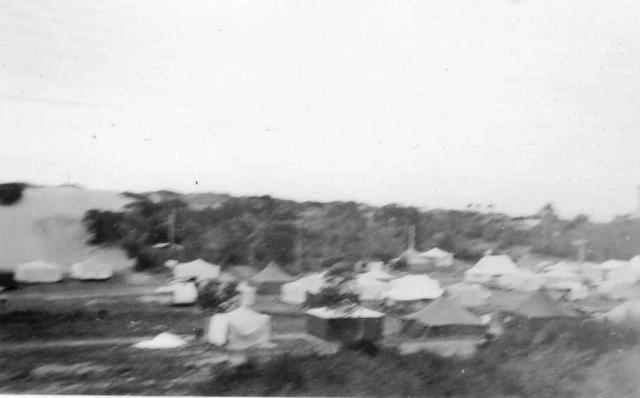
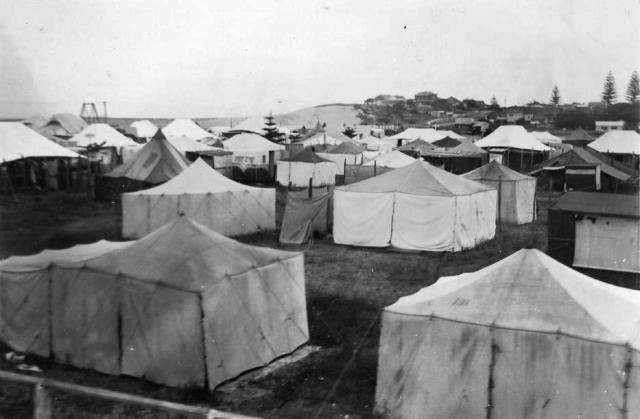
Left: Avalon Camp 1938, courtesy ACT State Archives on Flickr. Site hire is 10/- per week. For this water, sewerage, cleaning and supervision is provided. Warringah Camp its revenue is £11,000 p.a. Photographer unknown. Part of the Archives ACT collection.650 sites each 30' x 30'. this camp gives a slum impression. Policing is neccessary and evictions. There are 11,000 sites in Warringah, the deficiency is 50%.
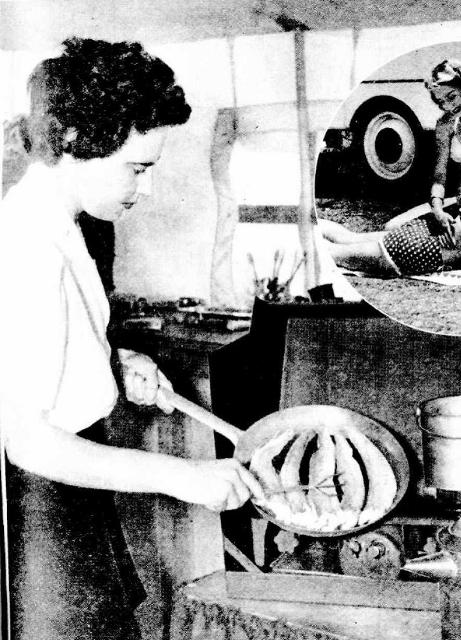
Above: IN a well-equipped canvas kitchen Mrs. H. Bowden, holiday camper at Avalon Beach, prepares a fish lunch. Below: Mrs. Bowden (centre) at lunch with Mrs. O'Day and her children in the canvas "dining room" of their- camp. from Sydney Morning Herald, p. 1 Supplement: The Sydney Morning Herald Magazine, Jan. 7th, 1947.
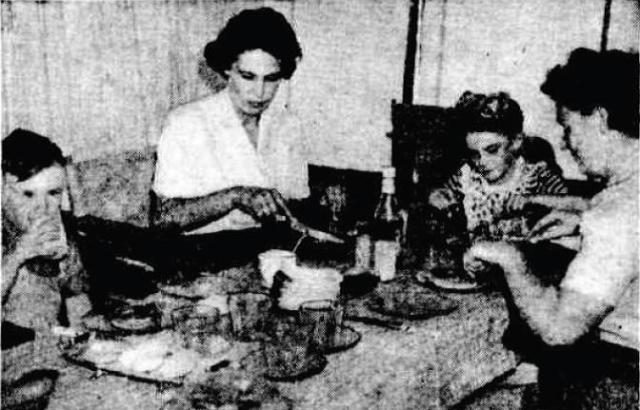
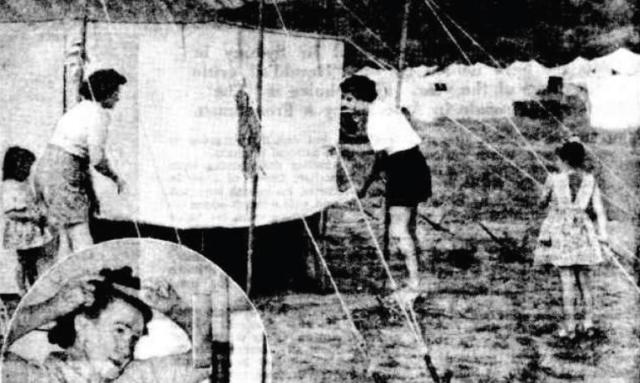
Frequent adjustments of tent ropes are necessary. The material stretches when dry, shrinks when damp, (insert) Nothing is more handy in a tent than a hand mirror(left) fastened to a pole. From Sydney Morning Herald, p. 1 Supplement: The Sydney Morning Herald Magazine, Jan. 7th, 1947.
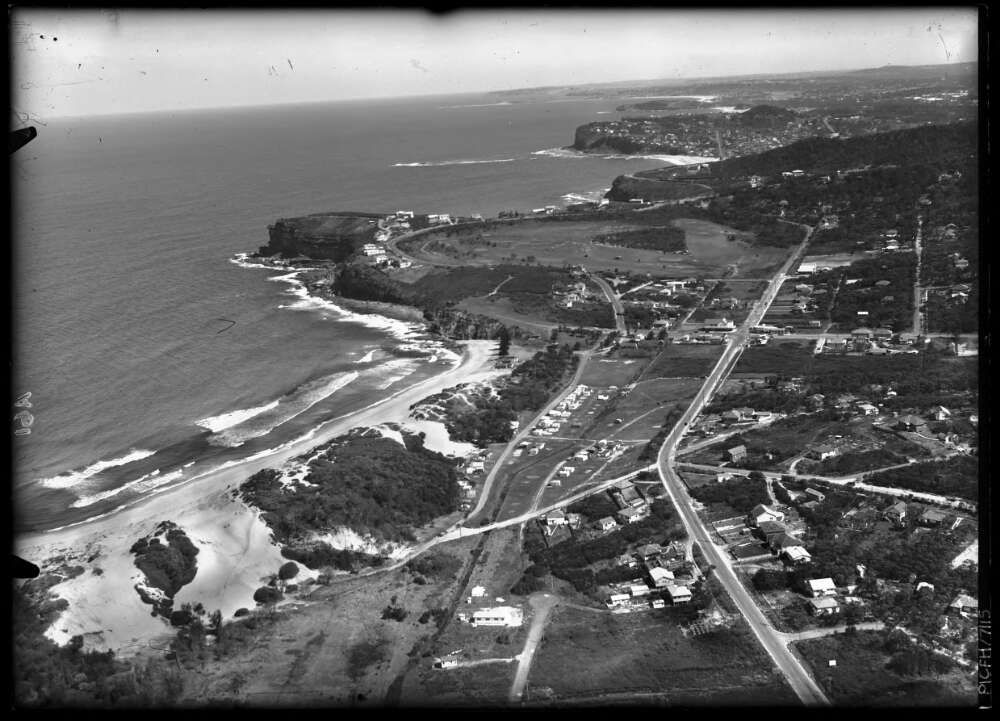
Avalon Beach & surroundings by Frank Hurley, 1950's, nla.pic-an23817014 (showing Avalon Camping Ground Tents). Courtesy National Library of Australia. Below - section from enlarged
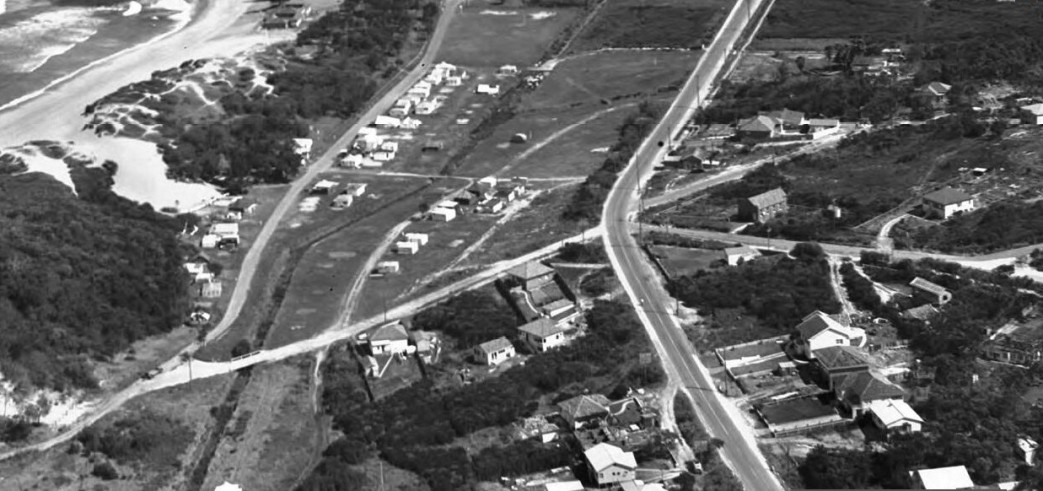
|
|
Avalon Camping Grounds - threads collected and collated by A J Guesdon, 2012